Menu
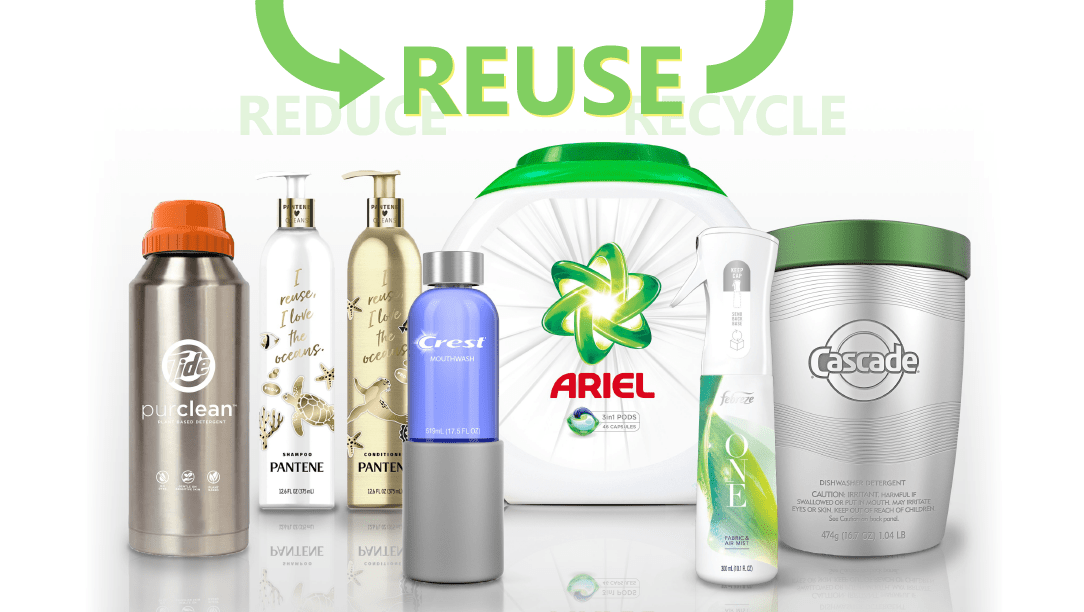
Reusable Packaging: from Waste Design to System Design
The Elephant in the Room: Covid-19 and Packaging Sustainability
Nowadays it’s impossible to talk about Packaging Sustainability without taking Covid-19 pandemic into account. In the midst of pandemic the ‘war on plastic’ was on hold. Safety came over sustainability (now we already have ‘Pandemic Waste Crisis’ in our oceans and seas). Some plastic bans were delayed and many Packaging Sustainability initiatives slowed down (I couldn’t get my take away coffee in my own reusable cup for a few months). Now, half a year after the beginning of this crisis we have a little bit clearer view. Even in times like these, we need to treat all crises seriously. While we do our best we can to save lives, we need to take care of our planet as well.
European Plastics Converters association requested (April 8) to postpone implementation of the EU’s single-use plastics directive due to the pandemic situation and European Commission rejected this idea and stated that they see no reason why they should change the deadlines (April 15). Apart from this, the EU have introduced a Plastic Waste Tax starting January 2021 which will contribute towards Covid-19 recovery package.
Greenpeace working with scientists worldwide published ‘Health Expert Statement Addressing Safety of Reusables and COVID-19’ (June 22) stating that disposable products present similar issues as reusable ones and that reusable systems can be used safely by employing basic hygiene, thus they suggest to bring reusables back and not slow down fight against Packaging Pollution.
Brands and NGOs worldwide came back to continue to work on Sustainability projects with even more energy than before, since this crisis showed that our present system is vulnerable and people still care about Sustainability. Maybe even more.
Preface: Reuse, Reuse, Reuse, Reduce, Recycle?
When brands declare their Packaging Sustainability goals they usually start with Reducing and Recycling. Reducing is a must, but it is just the first step of the sustainability journey. Designing for recyclability is a way better option than having unclear composition packaging with many layers of different materials. But only 9% of the plastic waste produced between 1950 and 2015 was recycled. And if we will invest too much in a new plastic recycling infrastructure then we will be dependable on new plastic production because we will have to sustain the infrastructure we built. Thus we can’t rely upon the idea that Reducing and Recycling will be enough. We need to think about Reusing as well.
Reusable Packaging models could be very interesting not only for tree-huggers but for many profit-focused enterprises as well. According to Ellen MacArthur Foundation, replacing just 20% of single-use plastic packaging with reusable alternatives globally offers an opportunity worth more than USD 10 billion. Additionally, Reuse models can bring major business benefits including better brand image, cost savings and data-based improved user experiences. Full report here.
Zero waste shops
When I visited Berlin for the first time, instead of going to famous landmarks I rushed to ‘Original Unverpackt’, acclaimed as the very first fully zero waste grocery store in the world. I felt like I was being a part of a big historical movement.
The idea is quite simple: you go there with your own containers (if it is your first time you can buy containers at the shop) and can buy anything you want including wine, toothpaste, home cleaning products, etc. without using any packaging.
The number of zero-waste stores has exploded over the last years. Even some supermarkets installed “Packaging free aisles”. For some people, it works just fine, but for an average person, it is still too much of a trouble. It is not everywhere, you need to carry many items with yourself and you can’t spontaneously decide that you would like to grab a coffee on a go. We need more options. We need a more systematic approach which would work for the main public as well.
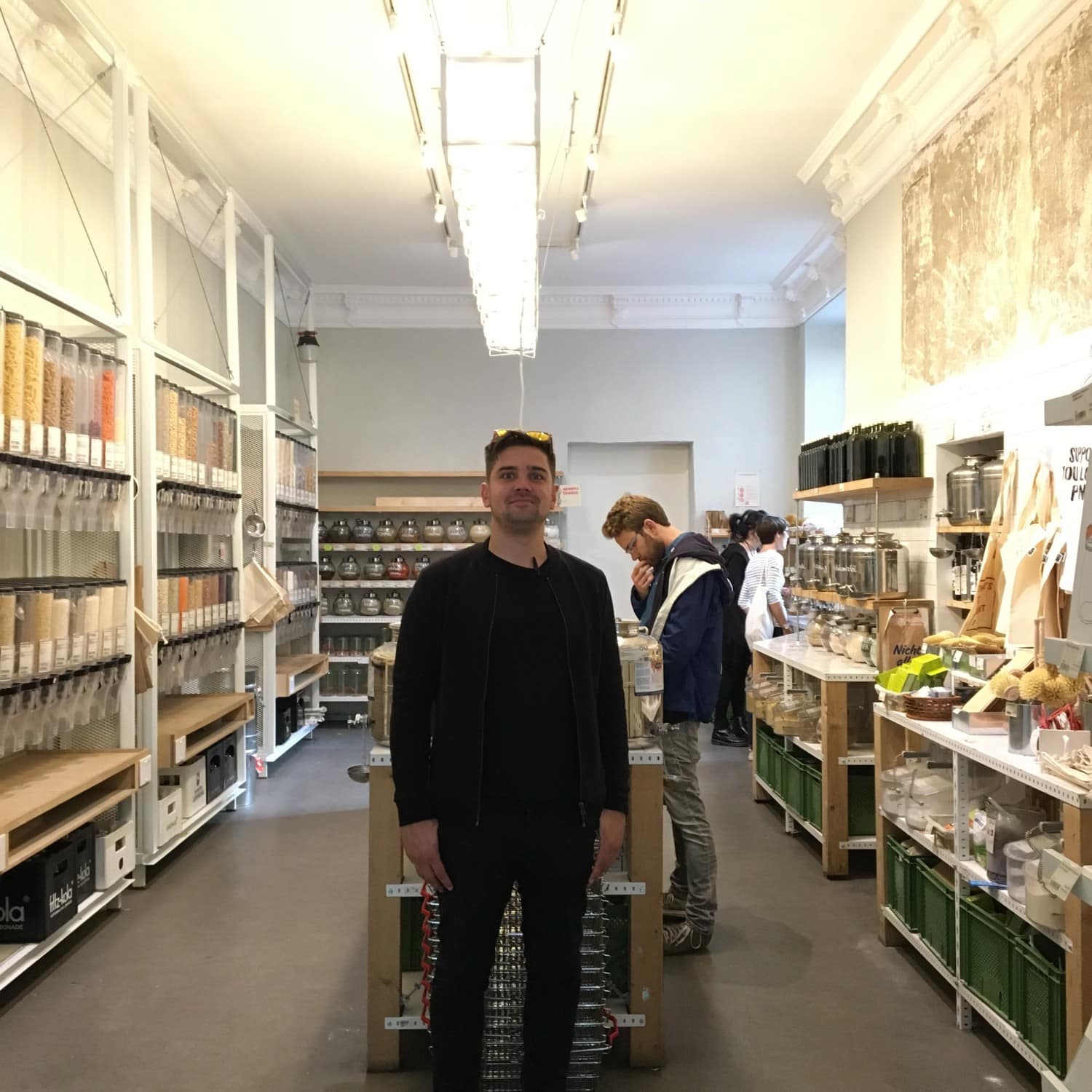
Going back: Milk & More
I can still remember my summers when I was visiting my grandparents in Vilkaviškis (a small city in Lithuania) in around 2000. I was sent each morning to run to a neighbours house just around a corner to bring a bottle of milk and leave one empty for tomorrow. There was no delivery since the community was small and everybody knew who is the closest “neighbour with a cow”. Nowadays, like most of the other people, my grandparents buy their milk in a supermarket packed in a plastic or Tetra Pak.
Organic farm milk poured into glass bottles and groceries packed into paper conveniently delivered to your doorstep with an electric vehicle in the morning, sounds pretty neat, right? It does. And it is the success formula of Milk & More.
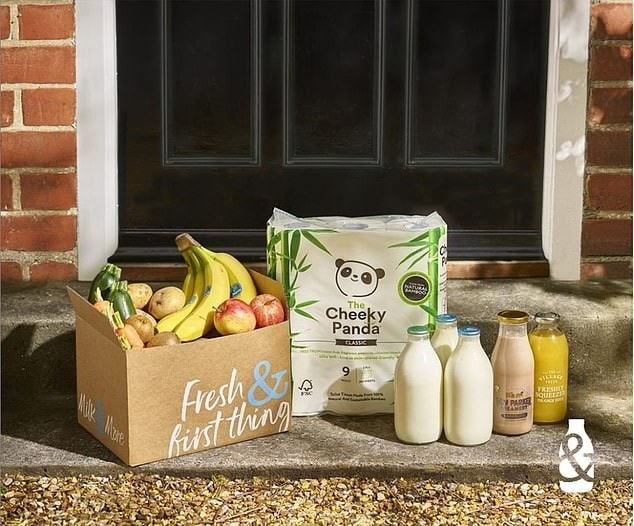
The original milkman model actually never completely vanished, but just became a niche service. Milkman services share of the market dropped from 90% to 3% when plastic bottles came into supermarkets in the 1990s, according to Dairy UK. It has risen to more than 5% from 2016 and is predicted to climb.
Milk & More, which controls about half the market make 100million pint bottles a year. More than 70,000 new households signed up for their services last year. Packaging sustainability is one of the reasons for their success because people looking to reduce single-use packaging. Cereals, fruits, veggies and other products are packaged without plastic to help customers easily reduce plastic waste. Milk & More still use plastic for some products, but they are actively working on it. 97 per cent of everything they sell is reusable, recyclable or compostable. And by 2025 they are aiming for 100 per cent.
On their website product descriptions are quite honest and informative. If materials are not recyclable – customers know about it. When Milk & More transparently declare what is what producers are compelled to improve – or they can lose conscious customers pretty fast.
(Interesting: From the beginning of the Covid-19 lockdown the demand for their services shoot up so much, that they needed to refuse new customers.)
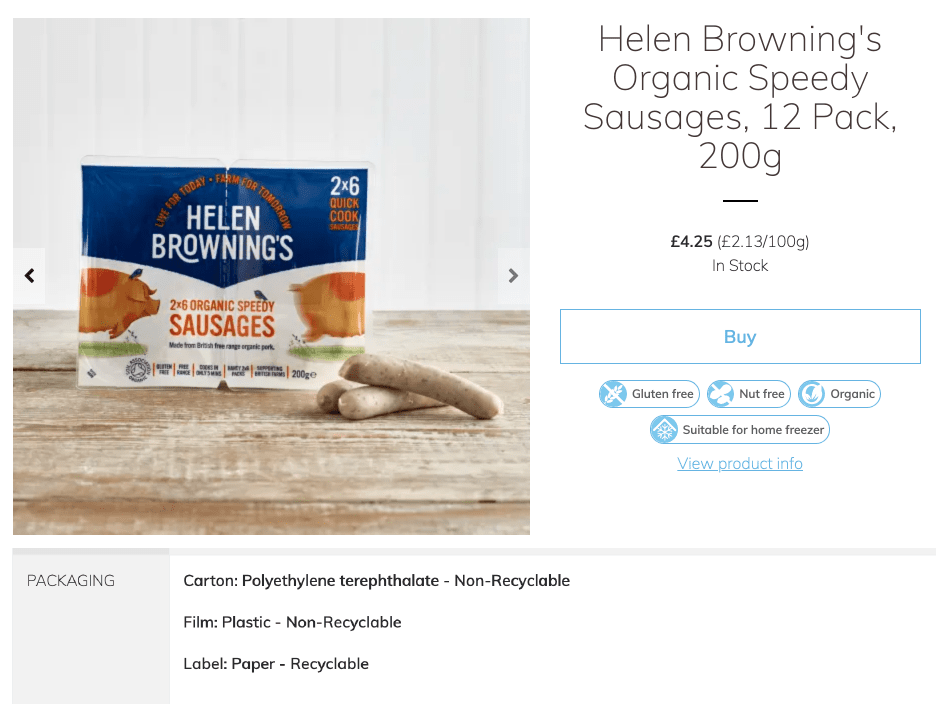
Digital milkman: Loop
In today’s world, single-use packaging is the most convenient option for customers. If we want to turn off the pollution tap we need to make reusing model convenient for the main population. Loop model is aiming to change things on a big scale.
TerraCycle has been actively working with the world’s biggest consumer goods companies and in 2019 January they have introduced Loop scheme under which goods will be packed into durable containers instead of single-use plastic packaging.
Just imagine. You make an online order for your favourite ice-cream, coffee and shampoo (and even something for your pet). They are being delivered straight to your door in durable, good looking containers. After you use them, you just leave them outside in a Loop box, they will be collected, washed and used again. The products can run on a subscription basis, which means, that after you use them, more will be delivered, or if you don’t want them anymore, the deposit for the container will be returned.
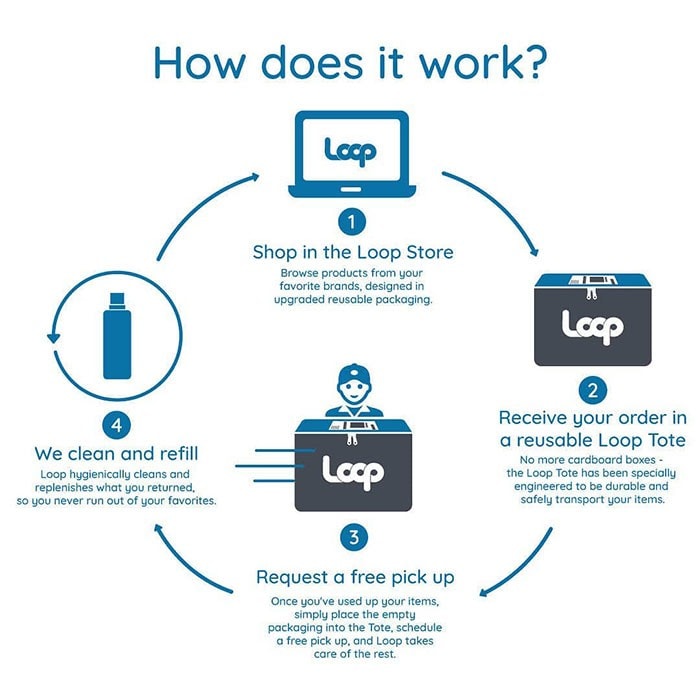
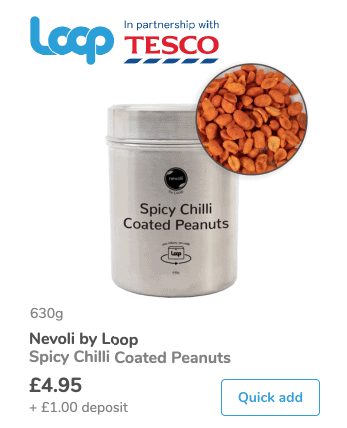 In 2019 Loop piloted the scheme in Paris with the retailer Carrefour. And this month the scheme was launched in the UK with the country’s largest supermarket chain Tesco (Explore their products here). Besides the pick-up option, there will be 2500 DPD’s drop off points. Next year Loop plans to roll out in Japan, Australia and Canada. This reborn of the old ‘milkman model’ could be a great thing not only for sea turtles and the environment but for brands as well. Which brand wouldn’t like to have a nicely designed metal box showcasing their product in a consumers’ home? Also, when you sell products on a subscription basis, your customers won’t face similar products since they don’t need to go to the store. Win-Win-Win (Turtles-Humans-Brands).
In 2019 Loop piloted the scheme in Paris with the retailer Carrefour. And this month the scheme was launched in the UK with the country’s largest supermarket chain Tesco (Explore their products here). Besides the pick-up option, there will be 2500 DPD’s drop off points. Next year Loop plans to roll out in Japan, Australia and Canada. This reborn of the old ‘milkman model’ could be a great thing not only for sea turtles and the environment but for brands as well. Which brand wouldn’t like to have a nicely designed metal box showcasing their product in a consumers’ home? Also, when you sell products on a subscription basis, your customers won’t face similar products since they don’t need to go to the store. Win-Win-Win (Turtles-Humans-Brands).
TerraCycle has been actively working with the world’s biggest consumer goods companies and in 2019 January they have introduced Loop scheme under which goods will be packed into durable containers instead of single-use plastic packaging.
Just imagine. You make an online order for your favourite ice-cream, coffee and shampoo (and even something for your pet). They are being delivered straight to your door in durable, good looking containers. After you use them, you just leave them outside in a Loop box, they will be collected, washed and used again. The products can run on a subscription basis, which means, that after you use them, more will be delivered, or if you don’t want them anymore, the deposit for the container will be returned.
Convenience on the go, everywhere: CupCup, Recup
A few summers ago I was partying with friends at Opener Festival in Gdynia. Music, summer and … beer, right? A beer which during festivals usually comes in plastic cups. But during that festival things were handled differently – when you buy your first drink, you need to pay 2 euros deposit, for a smooth, firm plastic cup. When you buy your second drink (no matter from whom, because all bars are participating in the system) you just give your cup back and get a new drink without paying for a cup again. When the festival comes to an end you just give back the cup and get your deposit back. This whole system worked well and saved hundreds of thousands of plastic cups and seemed just amazing for me because even those friends who are not big sustainability advocates gave back every cup they took.
The next year a company named CupCup in Lithuania started the same business: to provide cafes, festivals and private events service of managing reusable cups. In one year they managed to serve 74% of the country’s festivals (and saved 98’000 cups). This proves that big ideas implemented elsewhere could work in other, even smaller markets as well. Of course, it requires a lot of fine-tuning and even creativity to make it actually work in different ecosystems.
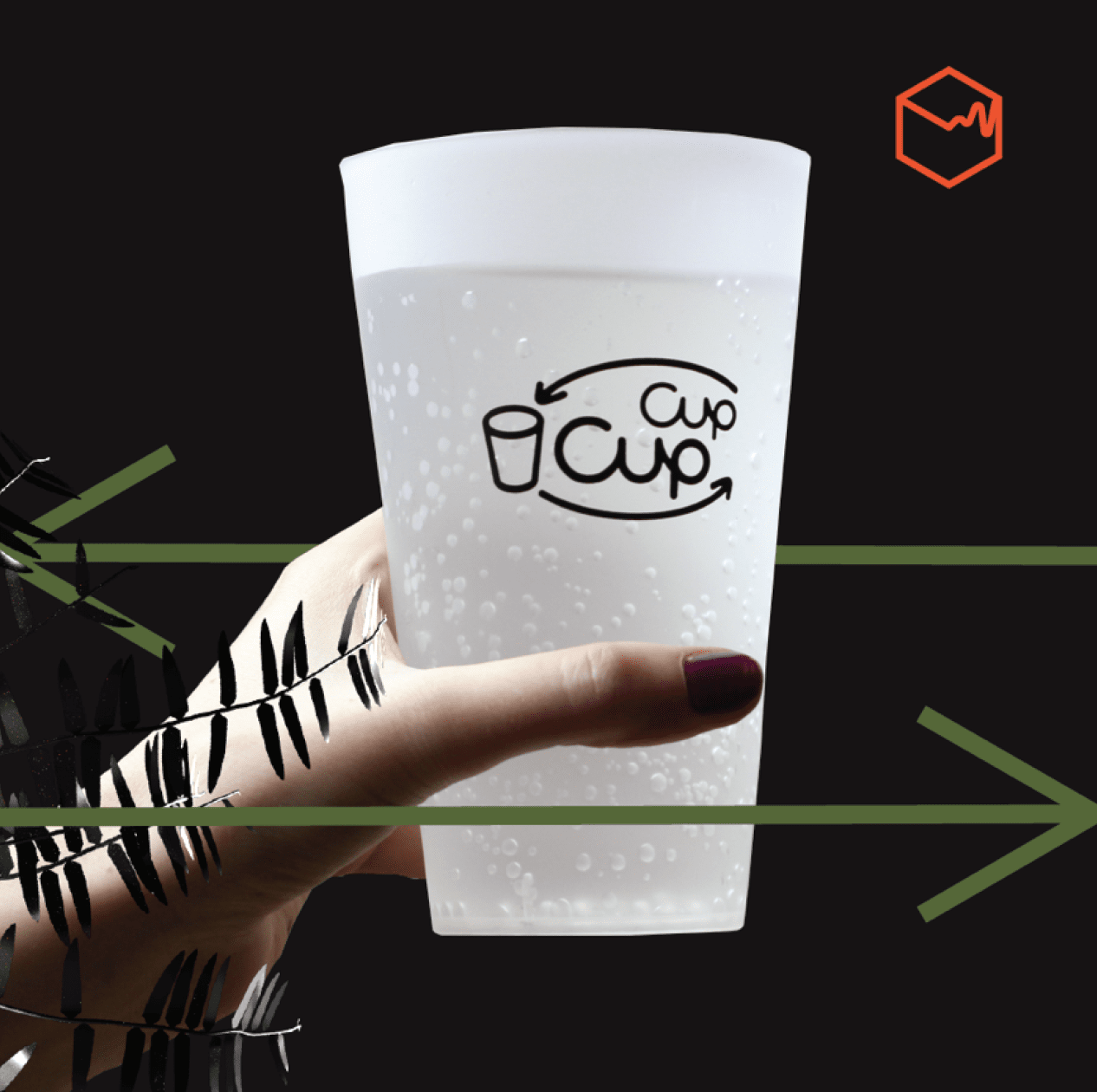
One of the best examples of Returnable Cup system was developed in Germany. Recup, with more than 2500 participating cafes already created a convenient web of places. You can grab a morning coffee in a local coffee shop, to give it back and take a cup of juice in a restaurant next to his workplace in the afternoon and then exchange it again to a cup of tea in a gas station while driving to another city in the evening.
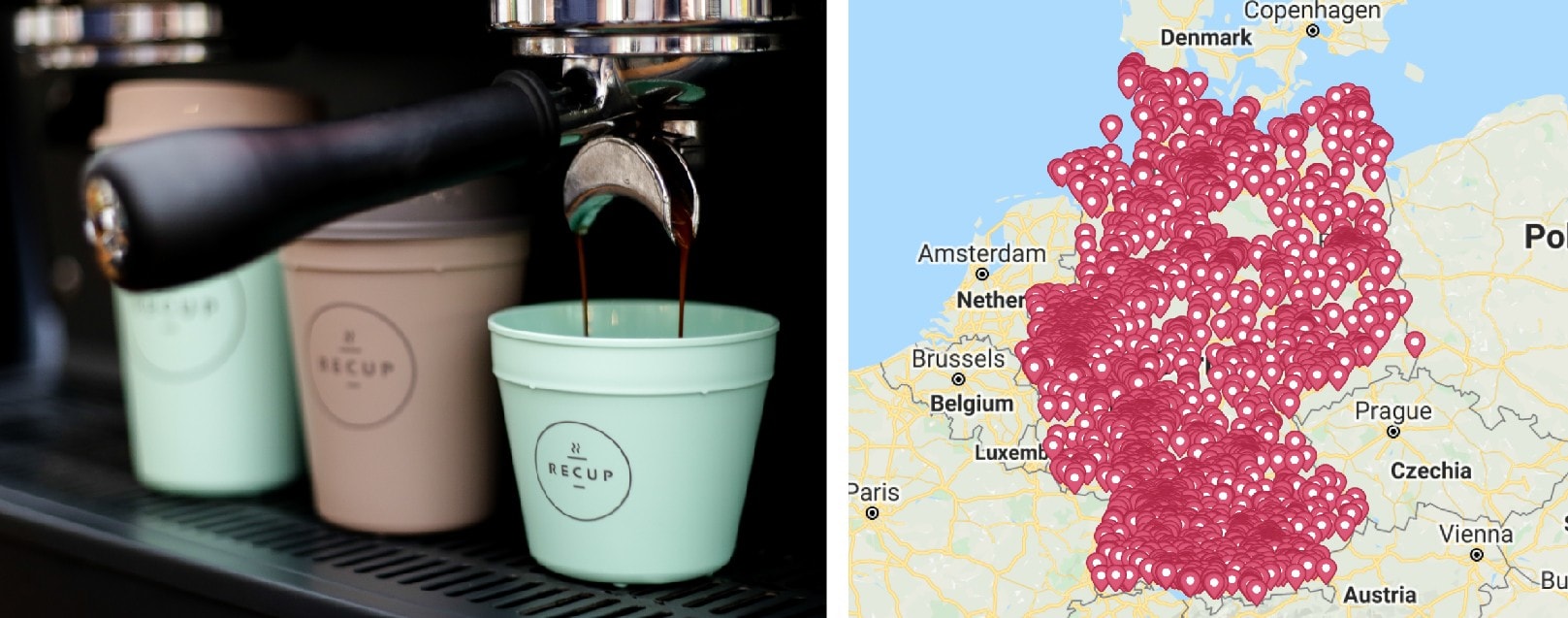
Although these initiatives worldwide seem to be already quite successful, these companies are just scratching a surface of a problem, having in mind that over 250 billion disposable cups are being consumed globally on an annual basis. Now, even big players like Starbucks and McDonald’s are developing similar models with an initiative called NextGen Cup Challenge, so these practices could become a new normal in the future. These goals may seem ambitious, but we will see many experiments creating various versions of this system both: from independent service providers and beverage manufacturers themselves.
Status Quo is Changing
We need more enterprises to develop Reusable Packaging Systems because there are a lot of smaller, more local companies and for them developing their own systems is almost impossible. From time to time I hear quality niche producers complaining that with Reusable Packaging they wouldn’t be able to ensure hygiene and that it would be even more unsustainable because of the new infrastructure they would need to build. But they don’t need to build that infrastructure. Specialized companies should provide those services. Let’s hope that present projects will lead the way and show that there is a demand for Reusable Packaging.
These changes are big. They could entirely change the leaders of the game. And everyone, no matter how big, popular and impactful they are today – they all should pay attention and act. The line between packaging design and product design will blur. We will need more holistic systematic approach when creating new things. This will require more creativity and collaboration. I think we are on the right path.
How do you see yourself and your company in the context of these changes?